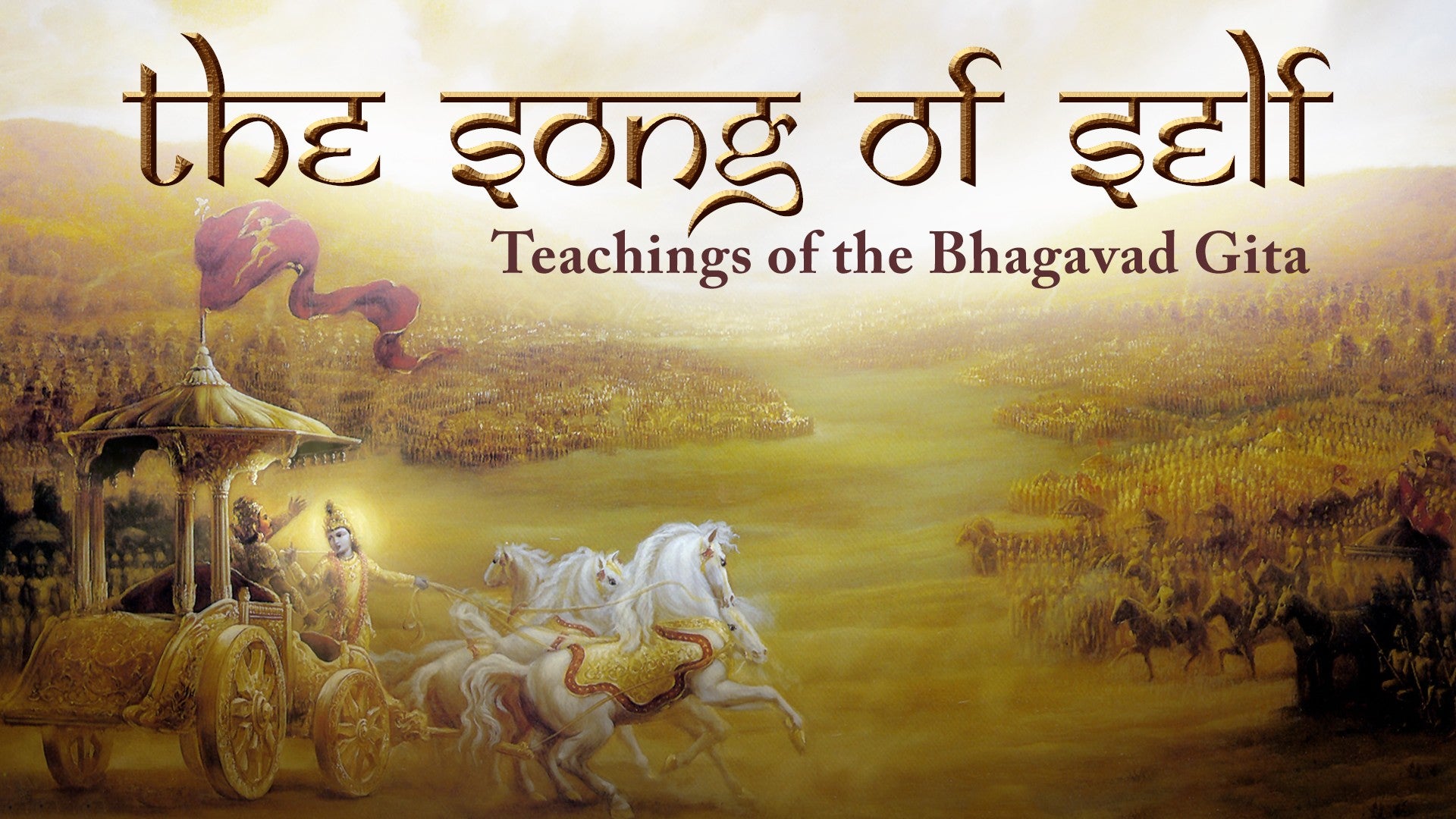Description
We have attached the Sanskrit Recitation & Metre PDF for you follow along more easily.
About This Video
Transcript
Read Full Transcript
So, having looked at the alphabet, we've already noticed that there are short vowel sounds in Sanskrit and long vowel sounds in Sanskrit. So when we are doing a recitation, it's kind of important to be aware if a vowel is long or short. And this is going to help us pronounce it more accurately. So, during this short talk, I'm going to be referring to this Sanskrit recitation meter sheet. And the first thing that it mentions is that when we're reciting, we have rasva sounds, which are the short ones, and dirga sounds. So the short sounds is a, i, u, r. And the dirga, long sounds, is a, i, u, r, e, ai, o, o. So here we've got an example. And they say, for example, there is when it's a short sound, you kind of almost skip over it lightly. And when it's a long one, you give it a bit more weight, a bit more duration. And they say that the short sound is like the note of a woodcock bird. And I have to confess, I'm not actually sure how the woodcock sings. But they say that the dirga sound, the long sound, is like the note of a crow. And in Sanskrit, they say a crow goes, ka, ka, ka. So the a is a little bit longer. So basically, short sounds that we kind of touch on briefly, and the longer one that we feel a little bit more. So an example here, this is a few syllables from a Sanskrit verse. It's actually the first verse of a hymn called the Adityatidhyam. And I'll just recite these sounds and maybe hear the difference. Again. So we see here we have short sound, t. Long sound, t. Then yu, short. Then the a of tata is short. The a of pa is short. The e of ri is short. But then we have shra, and this is long. Here again, we have a short vowel sound. So once more. When you might notice those long sounds, they have a bit more weight. However, if you notice, as well as the short and long sounds, you might notice on your sheet, it says just as important for accurate pronunciations whether a vowel is long, dirga, or short, rasva, is whether the syllable is what is called guru or lagu. And guru, it's interesting this word guru. It literally means heavy. Of course, guru has other meanings or significances. But if you think of a master, a guru, there's the idea that a guru is a person or a thing or an experience, the influence of which is heavy duty enough to shake of a limited idea into a place of greater openness. But guru literally means heavy. And in recitation, we have heavy sounds and light sounds. And I think, what does that mean? So basically, light sounds, lagu, light sounds are always having a short vowel sound. And furthermore, not only does it have a short vowel sound, it also means that it's not preceded by a conjunct consonant, which means two consonants together. It's not followed by anuswara, the M with a dot, or visarga, the H with a dot. And the syllable does not end in a consonant. So for example, if it was the end of a line and there was an M, this would also not be a light sound. So basically, we're looking for a short vowel and all of these conditions. Otherwise, the syllable would be heavy. So to qualify as being a heavy sound, automatically, if the vowel is dirga, long, it's a guru sound. However, even if the vowel is short, the syllable can still be guru or heavy if the vowel is preceded by a conjunct consonant, or the vowel is followed by anuswara or visarga, or the syllable ends in a consonant. So if we look again at a couple of examples, starting with the same few syllables. T-t-o-u-t-a-p-a-r-i-sh-a-n-t-a-m. So the first sound is lagu, tuh, short vowel and single consonant preceding it. It's not followed by anuswara or visarga. So it's lagu, tuh. Second sound is oh. So it's a long vowel. So automatically, it's guru. So tah-toh, we have a light sound and a heavy sound, lagu and guru. Third syllable here, yo. Again, we have a short vowel in this instance, oo, and it's not followed by anuswara or visarga. It's not preceded by a conjunct consonant. It's a single consonant. It's in this case a semi-vowel, actually, yo. And so it's light, it's lagu, tah-toh yo. But then, tah-toh yo tah-pah-ri-sh-a-n-tum. This syllable here is a short vowel, ah, but it's preceded by a conjunct consonant. We have duh and duh.
And so it makes it guru. Then we have pa, single consonant, short vowel. So it's lagu, ri, same, single consonant, short vowel, lagu. Here, shra. Now this would qualify as a guru in more than one way because it's got the long vowel, ah, but it's also two consonants. So it's guru. And then the last syllable of this line, again, it qualifies as guru in more than one way. It ends in anuswara, so it's guru, but also we have the conjunct consonant. Not just the nuh, but the tuh as well, ntum. If you listen again, you can maybe hear how the guru sounds. We spend a little bit longer on them because there's kind of more to voice, there's more to articulate there. So if we contrast, for example, the yuh, puri, they're all quite short, crisp sounds. But oh, we there a bit longer. Here, with this conjunct consonant, there's more for the voice to pronounce. And so it's guru heavy. The basic thing is that every sound that we see represented in the Devanagari script, which is what you can see here in this handwritten examples, and in the Roman transliteration, everything will be voiced. And consequently, some syllables will have a bit more weight than others. This is what guru and lagu is really about. And it's about pronouncing things clearly so the listener can understand everything that's being voiced. We can get a little bit more of an understanding, perhaps, of the guru and lagu from the second line, or second quarter of the verse. Samare cinta yastetam, together. Tato yutaparishran tam, samare cinta yastetam. So here at the beginning of the line, we have two lagu syllables, samare, single consonant, short vowel, re, single consonant, but long vowel. So it's guru. Chi, single consonant, short vowel, lagu. Then inta, conjunct consonant, two consonants together. So there's more weight, there's more to pronounce. And so it's guru. Ya, long vowel. Again, there's more to pronounce. We give more weight to that. So it becomes guru, a heavy syllable. Sti, you may be getting the idea now. It's a short vowel, but it's a conjunct consonant, and so it's guru. And then tam, it's the end of a line, and so the sound is followed by a consonant, and so it's guru. So maybe listening once again, you can start to maybe just distinguish how with the guru syllables, there's a little bit more weight.
We spend a little bit more time, there's a little bit more to articulate our voice. Ta-ta-ya-ta-pa-ri-shan-tam, samare-chan-ta-ya-stetam. And this, it might sound rather complex at the moment, but once we get into the practice of the verses, you'll see that you start to get the hang of it quite readily in context. So from here, if you're interested in recitation, you can work with me with the recording on the call and response of the verses of chapter two. Thank you.
The Song of Self: Let's Recite
Comments

You need to be a subscriber to post a comment.
Please Log In or Create an Account to start your free trial.








